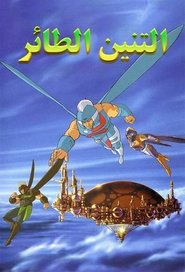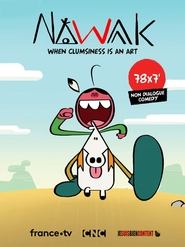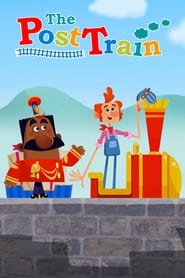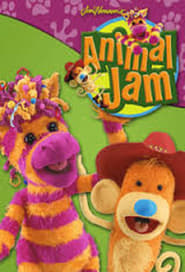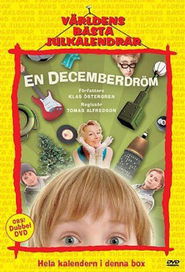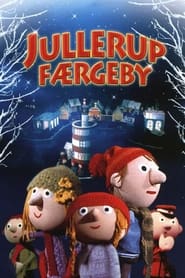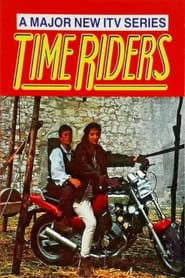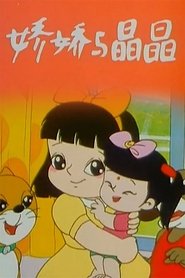Kids TV Series - Page 178
-
Star Wars: Go Rogue
2016
Star Wars: Go Rogue
2016
star 6.7A stop motion animated Star Wars series, created by fans and Lucasfilm, to introduce the new Rogue One action figures from Tongal. The shorts follow the Rogue One character’s adventures throughout the galaxy as they battle the Empire. -
Doggy Day School
2009
Doggy Day School
2009
Doggy Day School is the home away from home for a lovable crew of dogs – Suki, Lili, Pedro, Koda and Lucas. The dogs play, learn about each other and the world around them, and get into – and out of – merry mischief. -
Misho and Robin
2016
Misho and Robin
2016
Misho, a little curious cat, and Robin, a wise little robin, are best friends and an inseparable duo in their shenanigans and adventures. -
Dragon Flyz
1996
Dragon Flyz
1996
star 6.4Dragon Flyz is a television program created by Gaumont Pictures that ran for approximately two or three years. The program centered on a coalition known as the Dragonators, a set of humans who ride on Dragon-back in search-and-rescue operations. A line of toys named DragonFlyz, based on the series, was released by Galoob. Dragon Flyz - Children's ITV television programmes © GMTV Ltd. MCVICVI -
České pohádky
1968
České pohádky
1968
-
Bedtime Stories with Ryan
2023
Ryan Reynolds reads new and classic bedtime stories in an attempt to soothe your mind and soul (and also his own.) -
Nawak
2021
Nawak
2021
-
The Post Train
2016
The Post Train
2016
Join Fast Frank as he rushes off to deliver packages to his animal friends around the world. Through trial and error, Frank finally manages to find his friends in their natural habitat. Meet bears in snowy valleys, zebras in the savannah or camels in the desert. Frank is sure to deliver the package on time! -
Animal Jam
2003
Animal Jam
2003
Animal Jam is a children's television show created by John Derevlany and produced by Jim Henson Television which first aired on February 24, 2003 until 2010. -
Trumpton
1967
Trumpton
1967
star 7.8Trumpton is a stop-motion children's television show from the producers of Camberwick Green. First shown on the BBC in the 1960s, It was the second series in the Trumptonshire Trilogy, which comprised Camberwick Green, Trumpton, and Chigley. Trumpton was narrated by Brian Cant, animation was by Bob Bura, John Hardwick and Pasquale Ferrari. Scripts are by Alison Prince; all other production details were identical to Camberwick Green. -
En decemberdröm
2005
En decemberdröm
2005
star 511-year-old Bobo is embarrassed by his mom’s terrible singing—until he discovers she was once a Swedish music legend, before losing her voice when he was born. After a football accident leaves Bobo in a coma, he’s swept into a dreamlike underworld where he meets its mysterious boss. -
宇宙护卫队之超甲恐龙队
2023
宇宙护卫队之超甲恐龙队
2023
-
Jullerup Færgeby
1974
Jullerup Færgeby
1974
-
Time Riders
1991
Time Riders
1991
star 5.5B.B. Miller is a motorcycle riding time traveller who gets into various troubles throughout history with her companion Ben, a Victorian street urchin. -
MasterChef Júnior
2015
MasterChef Júnior
2015
star 8MasterChef Junior Brasil is a culinary competition for talented kids between the ages of 9 and 13 who love to cook. The series will give budding cooks the exciting opportunity to showcase their talent, culinary smarts and passion for food through a series of delicious challenges and cook-offs. The show is hosted by the journalist Ana Paula Padrão and the chefs Henrique Fogaça, Erick Jacquin and Paola Carosella will coach and encourage the promising hopefuls to cook like pros and teach them the tricks of the trade along the way. -
Villa Dulce
2004
Villa Dulce
2004
star 5.2The smaller the town, the bigger the mess. A group of children have fun while they make the town's major life impossible. -
Michel
2012
-
娇娇与晶晶
1995
娇娇与晶晶
1995
-
The Choo Choo Bob Show
2012
All aboard for the adventures of Choo Choo Bob and his wacky friends as they visit railroads and museums all over the country, sing songs with each other or with guest musicians such as Ozomatli and Haley Bonar, and visit Tinyland, the small world located on Choo Choo Bob's train layout.




